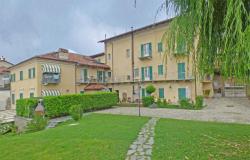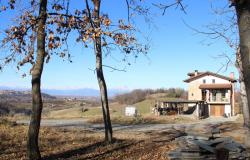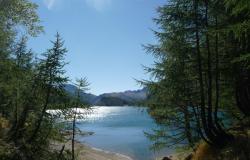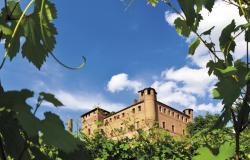 A month-long check-up into the health of the great River Po spanning northern Italy is producing a worrying diagnosis, according to experts.
A month-long check-up into the health of the great River Po spanning northern Italy is producing a worrying diagnosis, according to experts.
A report released two weeks into the initiative, which is testing the entire waterway's length in 25 stages, notes that just 50 km from its source in the Alps, the river is already tainted.
The situation deteriorates rapidly once the river leaves its native Piedmont and arrives in Lombardy, the findings show.
Scientists and students are examining the water, the sediment, the route and shape of the river, and wildlife in order to assess the Po's health.
So far, they have concluded that the majority of pollution, 52%, is caused by industry. The next biggest polluting sector is agriculture and livestock farming, accounting for 33%, while domestic effluent is the source of 15%.
The 652-km Po, the country's longest and most used river, flows from the Alps to the Adriatic Sea. It is used by thousands of farmers to water their crops and is also a key shipping route.
Another serious problem facing the Po is contamination from seawater.
Erosion of sandbanks caused by human activity has reduced natural barriers to the sea and, combined with rising sea levels caused by climate change, means the Po and its tributaries are increasingly overrun by salt water.
In recent years, sea tides regularly rise 20km up the Po, compared to just two kilometres in 1960. During periods of drought, levels have risen as high as 30km, the findings show.
Over 20,000 hectares have been deprived of irrigation as a result.
The initiative, entitled In Search of the Great River, involves 153 students and their professors, travelling by bicycle and boat from the river's source near Monviso in northwest Italy to its delta on the Adriatic.
The 650km field trip through four regions and 13 provinces started on September 26 and is due to wrap up on October 20.
It is expected to produce the third damning report this year on the state of the Po's health.
Earlier this year, a scientific study by experts from four universities found that on a scale of one to five the river's waters merited a two.
The study said that while the waters of the river were relatively clean, high pollution levels were found in the silt layers, especially in the delta area on the Adriatic.
Another report warned that if current climate trends continue, the waterway risks running dry some 100km before reaching its delta.
The Po River basin has a population of 16 million people and produces 40% of the nation's GDP and accounts for 46% of the labour force.
The basin also hosts 55% of Italy's livestock farms and 35% of the country's working farms.













